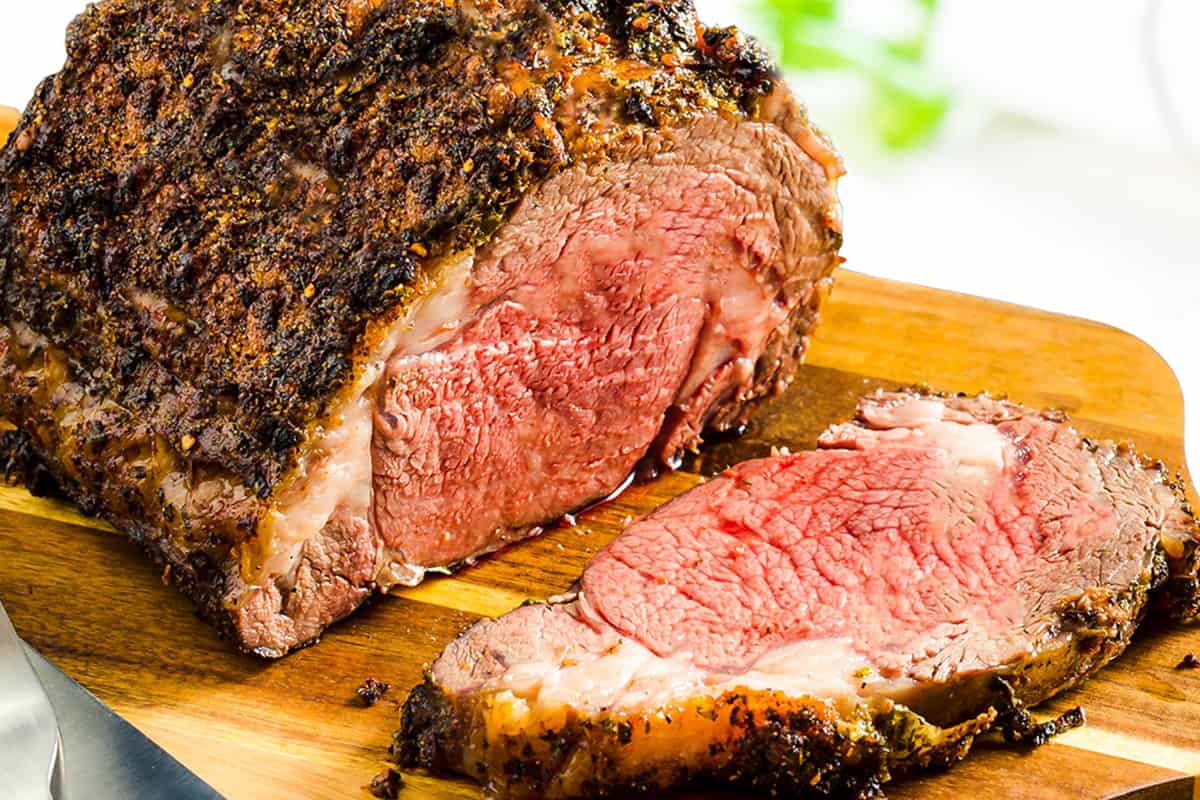
This site runs ads and generates income from affiliate links. Read my disclosure policy.
This juicy, tender Ribeye Roast (also known as Boneless Prime Rib) will be the star of your dinner table – no matter the occasion!
Serve it with Sour Cream Mashed Potatoes, and Roasted Broccoli for a dinner that will wow your guests!
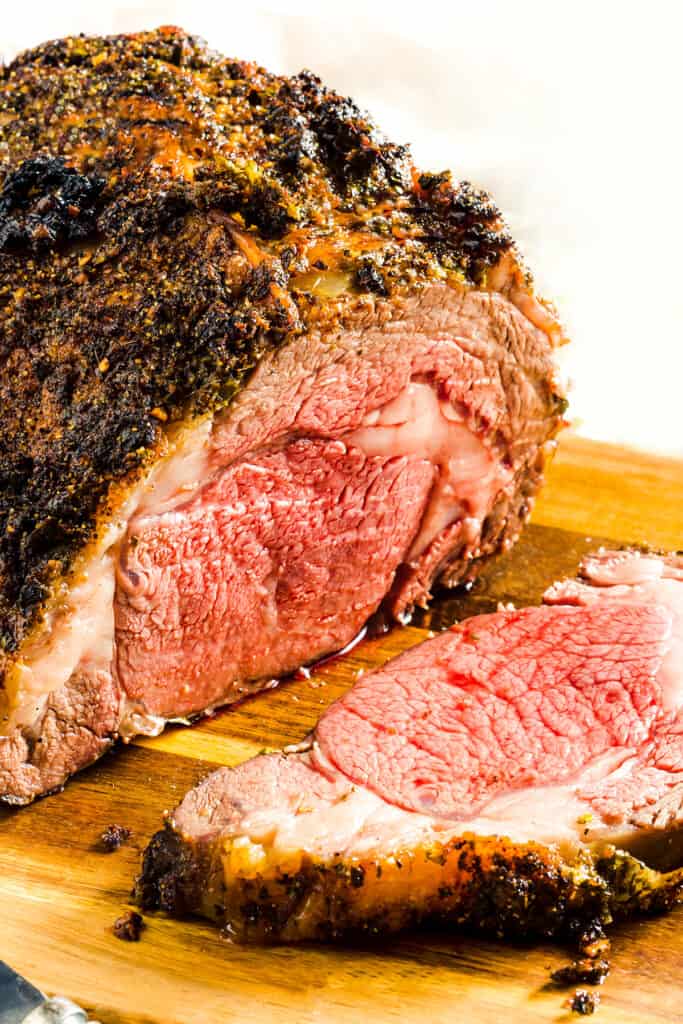
Perfect for special occasions or holidays, this delicious and succulent Ribeye Roast makes an impressive presentation and is easy to prepare. When cooked properly, your roast will surely be a hit, and this guide will tell you all there is to know.
I recommend reading the entire article, but you can also use the table of contents below to skip to the different sections.
Why This Recipe Works
- Salting the meat in advance helps the salt penetrate further into it, making it more flavorful.
- A well-seasoned exterior brushed with Dijon mustard and spices creates a crust that’s packed with flavor.
- Starting with a high oven and finishing with a low, slow method gives the roast perfectly cooked slices.
Ribeye Roast Vs. Prime Rib
A ribeye roast is a prime rib roast without the bone. It’s the same cut of meat. Although the bone adds a lot of flavor, I prefer using Ribeye roast because prime rib is expensive, and you pay by the pound – why pay for the bone? Choosing a boneless prime rib also makes it much easier to carve and serve.
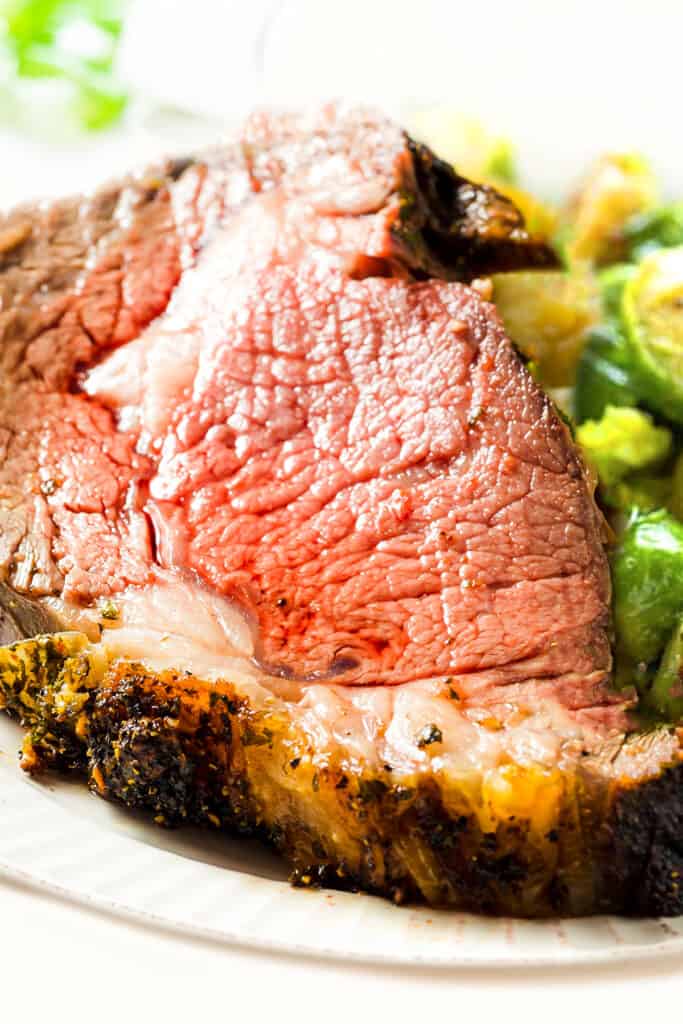
How Much Will You Need?
If you plan to serve the roast as the main course of a dinner, buying one pound of prime rib for each person is a good rule of thumb. But be sure to consider the whole menu. You may only need half a pound per person if you plan to serve it for a large holiday meal with many other courses and sides.
Boneless prime rib and ribeye roasts come from the back upper ribs of the cow. You don’t have to purchase the whole section; just tell your butcher how many pounds you need.
Salting The Roast
Many people are afraid to use salt, but the food at your favorite restaurants tastes so good because chefs are trained to season their food. I remember watching the chef demonstrate in my first culinary class, and every single time I thought the dish would be too salty, but it always had the perfect amount of seasoning. Salt not only adds flavor but also helps to bring out the natural flavors in food, enhancing the texture of meats.
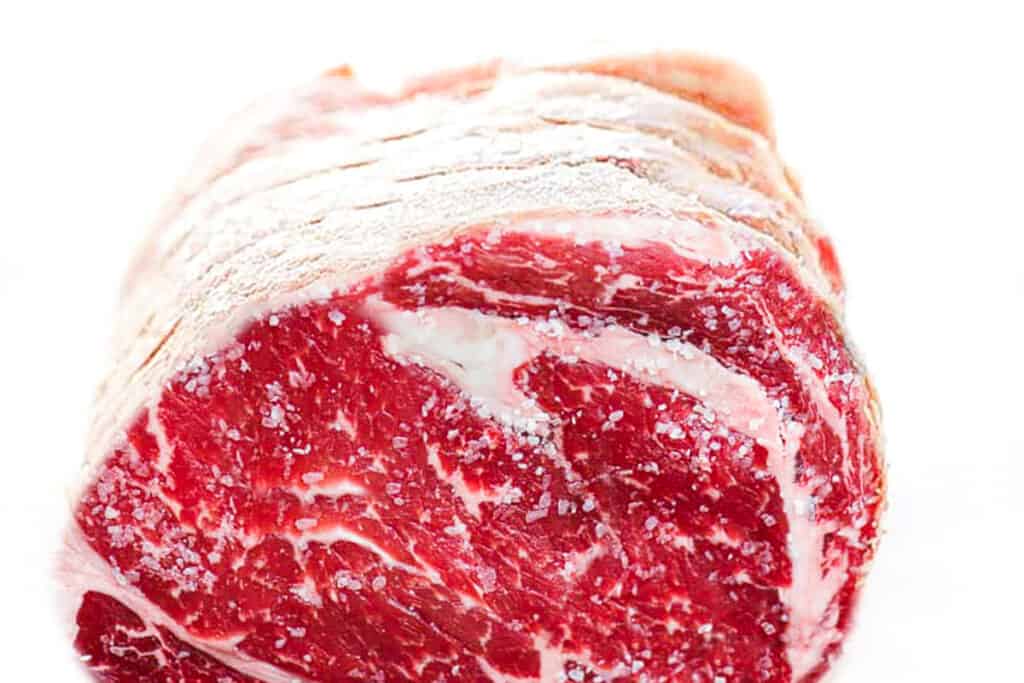
For best results, salt the entire surface of your roast with kosher or sea salt for at least 45 minutes before cooking it (preferably one to two days before), then leave it in the fridge uncovered. The salt will draw out some of the meat’s moisture and then dissolve in it, forming a brine that is reabsorbed by the meat.
In addition to seasoning the meat and enhancing the beefy flavor, salt dissolves some of the proteins, resulting in a buttery-tender roast. Salt and air together also dry out its exterior for better browning.
To prevent cross-contamination, you should always store raw meat at the bottom of your refrigerator. If you’re uncomfortable leaving the meat uncovered, cover it with a light layer of plastic wrap.
Ingredient Notes
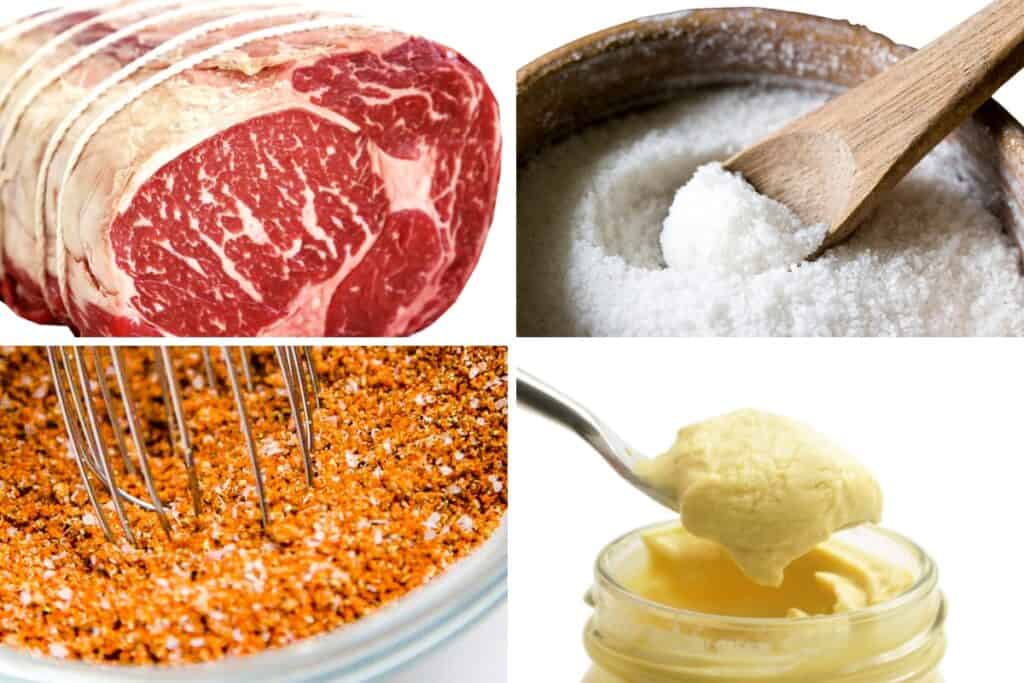
- Beef Roast – This recipe calls for a 4lb ribeye roast (also known as a boneless prime rib, forerib, rib of beef, or standing rib roast). The recipe can be adjusted to the weight you have in the instructions.
- Salt: I recommend using a coarse salt such as kosher salt or a sea salt such as Fleur de Sel or Maldon Sea Salt flakes.
- Mustard: You can use either prepared mustard, such as Dijon, or softened butter if you prefer.
- Herbs: Any combination of fresh herbs such as parsley, thyme, oregano, or rosemary will work great. You can also substitute the fresh herbs with 1 teaspoon of dried herbes de Provence.
- Paprika: Choose sweet paprika for the best flavor or if you like a smoky flavor, use smoked paprika.
- Black Pepper: Freshly ground black pepper is preferred for maximum flavor. If you don’t have access to freshly ground, then use pre-ground black pepper.
- Brown Sugar: Brown sugar is optional, but it does help to add a touch of sweetness and depth of flavor. I use light brown sugar, but dark brown sugar will work too.
Step By Step Instructions
Prepping The Ribeye Roast
Cut through the fat cap with a sharp knife in a crosshatch pattern, being careful not to cut into the meat.
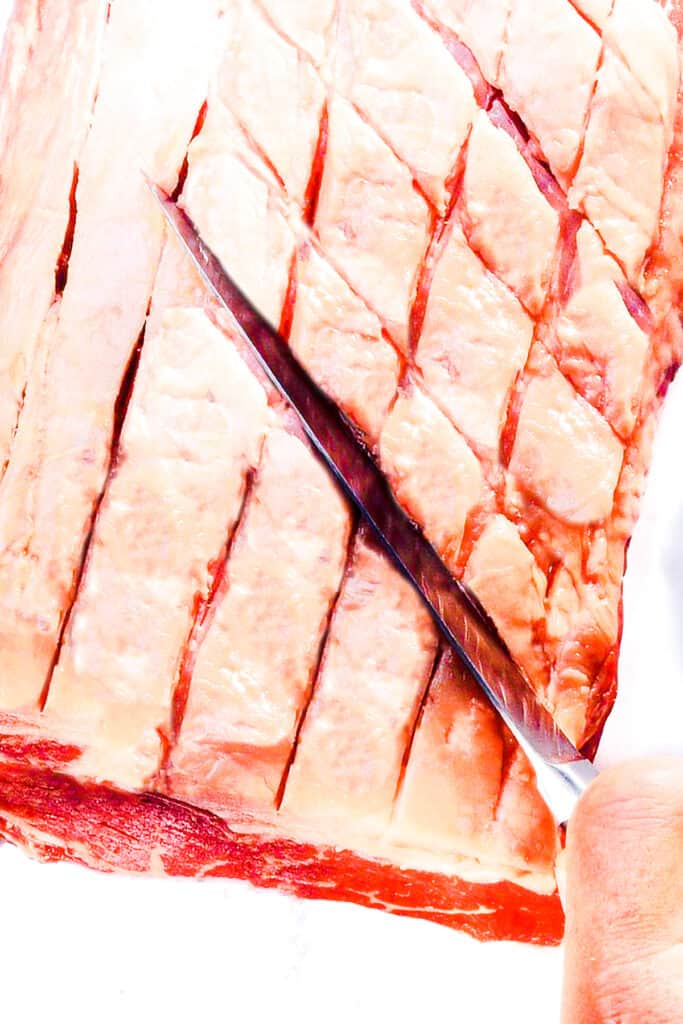
Apply salt to the roast’s entire surface. Transfer to a large plate and refrigerate, uncovered, for up to two days.
Remove the roast from the refrigerator and let stand at room temperature for 2 hours. This will ensure even cooking.
Preparing The Roast
Preheat oven to 500°F/260°C. Then add the garlic and mustard together in a small bowl.
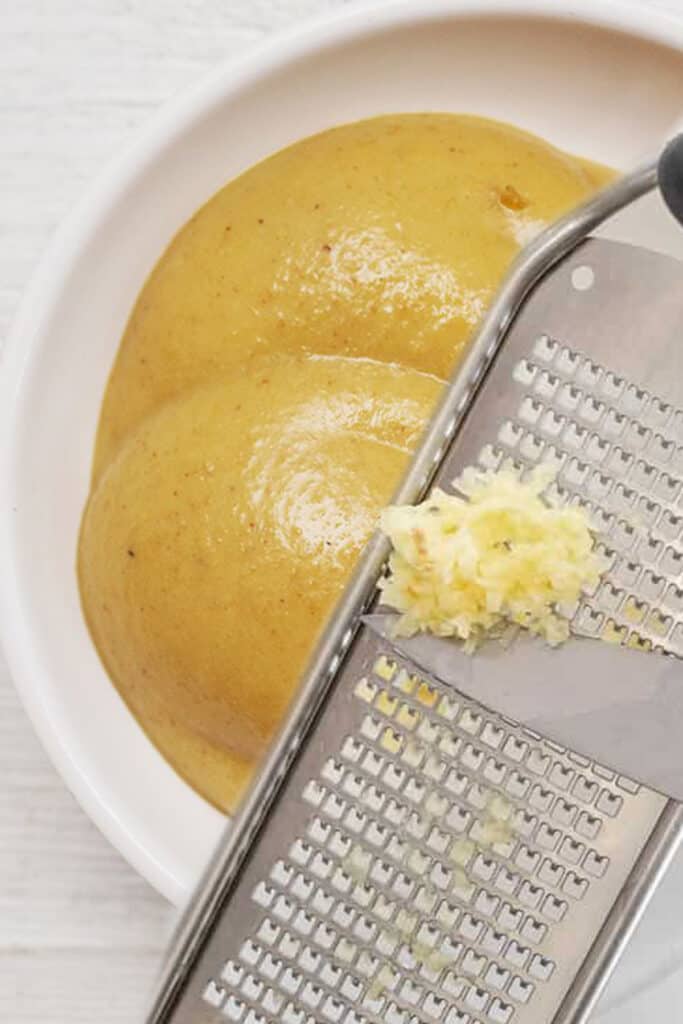
Mix in the herbs and set aside. Then mix the paprika, brown sugar, and black pepper in another bowl and set aside.
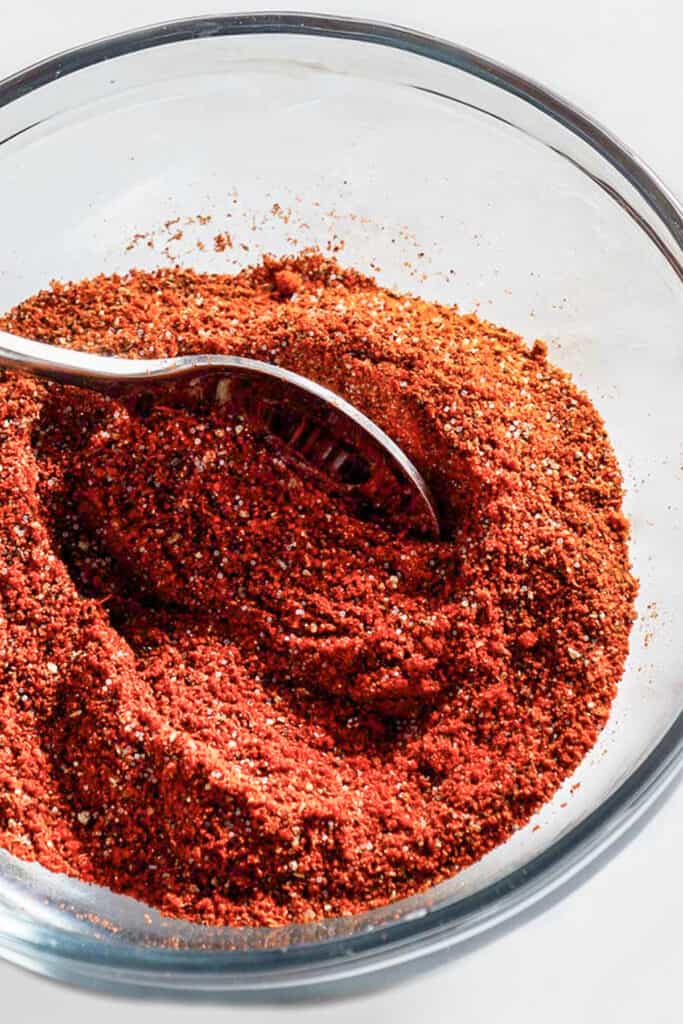
Pat the roast dry with paper towels. Spread the garlic and mustard mixture over the top and sides of the roast.
Cover the roast with the mustard mixture and sprinkle the paprika blend over the entire surface of the roast. Rub with your hands to make sure you have an even coating of seasonings on all sides of the roast.
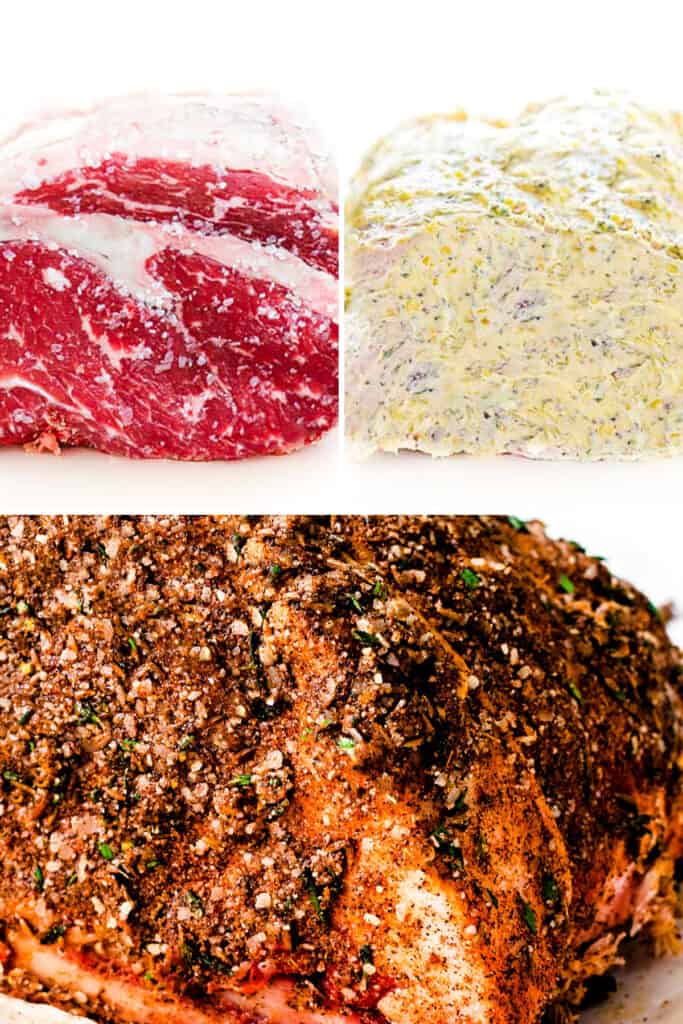
Place the roast in a baking pan and cook for 15 minutes, then reduce heat to 350°F/180°C and continue to cook until the desired doneness is reached (see chart below).
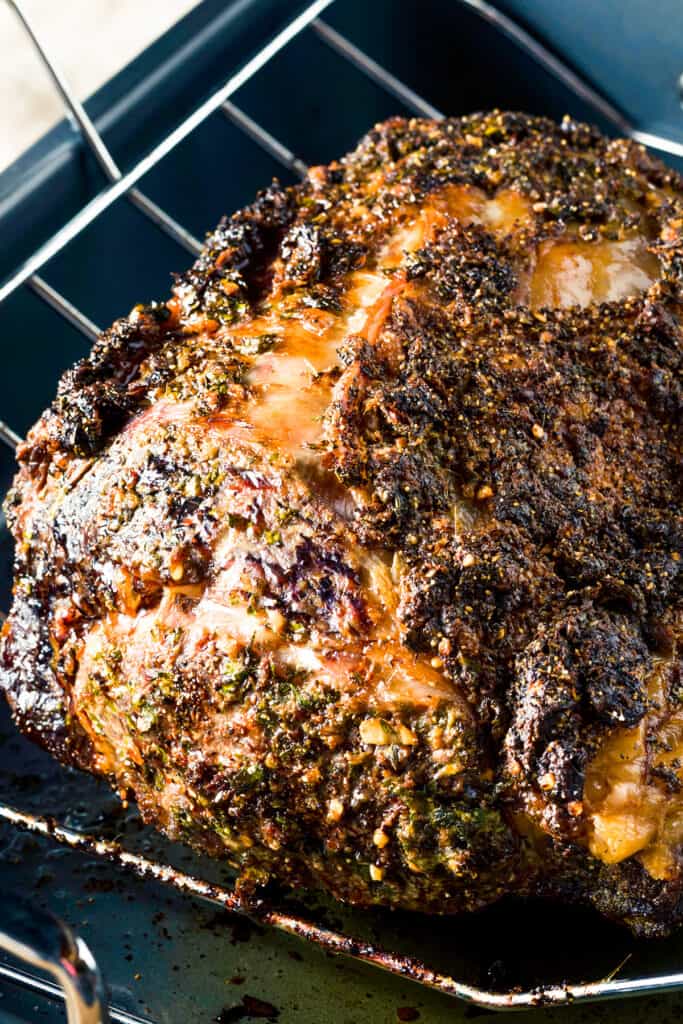
Remove from oven, tent with foil, and let stand for at least 15 to 20 minutes. Slice the meat across the grain to the thickness you prefer.

Roast Beef Internal Temperatures
During resting time, the internal temperature will rise about 5 to 10 degrees. Remove the roast from the oven 5 to 10 degrees below the desired serving temperature. The residual heat (also known as carryover cooking) will do the rest. Follow the ‘cook to’ temperatures below and rest for at least 20 minutes for the best results.
If your primary concern is food safety, cook the pork until well-done.
| Doneness | Cook To | Rest To |
| Rare | 120 to 125°F 49 to 51°C | 125 to 130°F 51 to 54°C |
| Medium Rare | 130 to 135°F 54 to 57°C | 135 to 140°F 54 to 60°C |
| Medium | 135 to 140°F 57 to 60°C | 140 to 145°F 60 to 63°C |
| Medium Well | 145 to 155°F 63 to 68°C | 155 to 159°F 68 to 70°C |
| Well Done | 150°F 66°C | 160°F 68°C |
Download the above Roast Beef Temperature Table to print or save for later.
Serving Suggestions
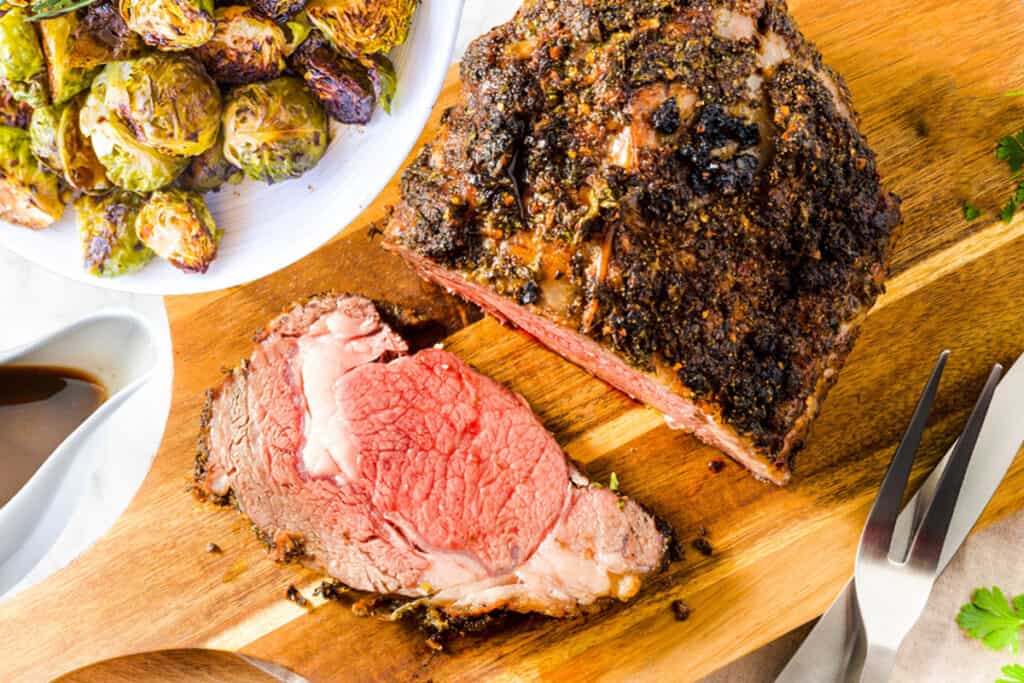
Ribeye roast is delicious when paired with Mashed Potatoes, Roasted Potatoes, Mashed Sweet Potatoes, or Rice Pilaf. A simple roasted vegetable also makes a great pairing, like Roasted Asparagus, Brussels Sprouts, or Broccoli.
Tips For A Perfect Ribeye Roast
- If you’re buying a prime rib with the bone, just ask the butcher to remove it and use it as your baking rack in the pan.
- If Using a Convection Oven: Convection ovens can reduce cooking times by up to 25%. Additionally, the convection oven can dry your roast and cook it too much. Keep a careful eye on the roast and use a cooking thermometer to determine when it is done.
- If you plan to make gravy with the drippings, be sure to use a roasting rack in your pan so you can let it rest in the rack while you make the gravy.
- High Altitude Roasting: Use the instructed time and temperature, as altitude changes do not affect oven temperatures but allow for additional cooking time. Use a meat thermometer to measure internal temperatures.
- If you are not a fan of mustard, replace it with butter for the same result.
- Basting is not necessary, but if you want to baste your roast every 30 minutes with the dripping from the pan.
Storage & Freezing Instructions
If you’re lucky enough to have leftover prime rib, here are a few tips on storing and reheating it.
Storage: Leftovers will last in the fridge stored in an airtight container for 3 to 4 days.
To Freeze: Store in a freezer-safe container in the freezer for up to three months. When ready to use, thaw in the fridge overnight.
When reheating, make sure to heat it slowly and evenly to prevent drying out the meat.
Did you make this?
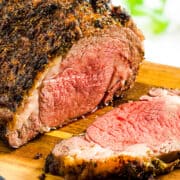
Recipe
Ribeye Roast
Ingredients
- 4 lbs ribeye roast (boneless prime rib, forerib, rib of beef, or standing rib roast)
- 3 tablespoons Kosher Salt
- 3 cloves garlic (minced)
- 4 tablespoons Dijon mustard (or softened butter)
- ¼ cup paprika
- 1 tablespoon brown sugar
- ¼ cup ground black pepper
- 1 tablespoon fresh parsley (or thyme, chopped (or 1 teaspoon herbes de Provence))
Instructions
- If the roast has a fat cap, using a sharp knife, cut through the fat in a 1-inch crosshatch pattern being careful not to cut into meat).
- Rub the salt over the entire surface of the roast. Transfer to a large plate and refrigerate, uncovered, for 45 minutes to 2 days.
- Remove the roast from the refrigerator and let stand at room temperature for 2 hours.
- Preheat oven to 500°F/260°C.
- Mix the garlic and mustard together in a small bowl and set aside.
- Mix the paprika, brown sugar, and black pepper in another bowl and set aside.
- Pat the roast dry with paper towels. Spread the garlic and mustard mixture over the top and sides of the roast. Sprinkle the paprika, brown sugar, and pepper blend over the entire surface of the roast.
- Apply a thin layer of the mustard mixture to the roast covering all sides.
- Apply the rub and herbs, covering all sides.
- Roast in the oven for 15 minutes.
- After 15 minutes, reduce the temperature to 325°F/163°C and roast for a further 15 to 18 minutes per pound (60 to 75 minutes for a 4lb roast). In the thickest part of the roast, a meat thermometer should register 130 to 135°F (54-57°C) for medium-rare or 135 to 140°F (57 to 60°C) for medium.
- Remove from oven, tent with foil, and let stand for at least 15 to 20 minutes. Slice the meat across the grain to the thickness you prefer.
Tips
- During resting time, the internal temperature will rise about 5 to 10 degrees. The rib eye roast should be removed 5-10 degrees before it’s done.
- If you’re buying a prime rib with the bone, just ask the butcher to remove it and use it as your baking rack in the pan.
- If Using a Convection Oven: Convection ovens can reduce cooking times by up to 25%. Additionally, the convection oven can dry your Roast and cook it too much. Keep a careful eye on the Roast and use a cooking thermometer to determine when it is done.
- If you plan to make gravy with the drippings, be sure to use a roasting rack in your pan so you can let it rest in the rack while you make the gravy.
- High Altitude Roasting: Use the instructed time and temperature, as altitude changes do not affect oven temperatures but allow for additional cooking time. Use a meat thermometer to measure internal temperatures.
- If you are not a fan of mustard, replace it with butter for the same result.
- Basting is not necessary, but if you want to baste your Roast every 30 minutes with the dripping from the pan.
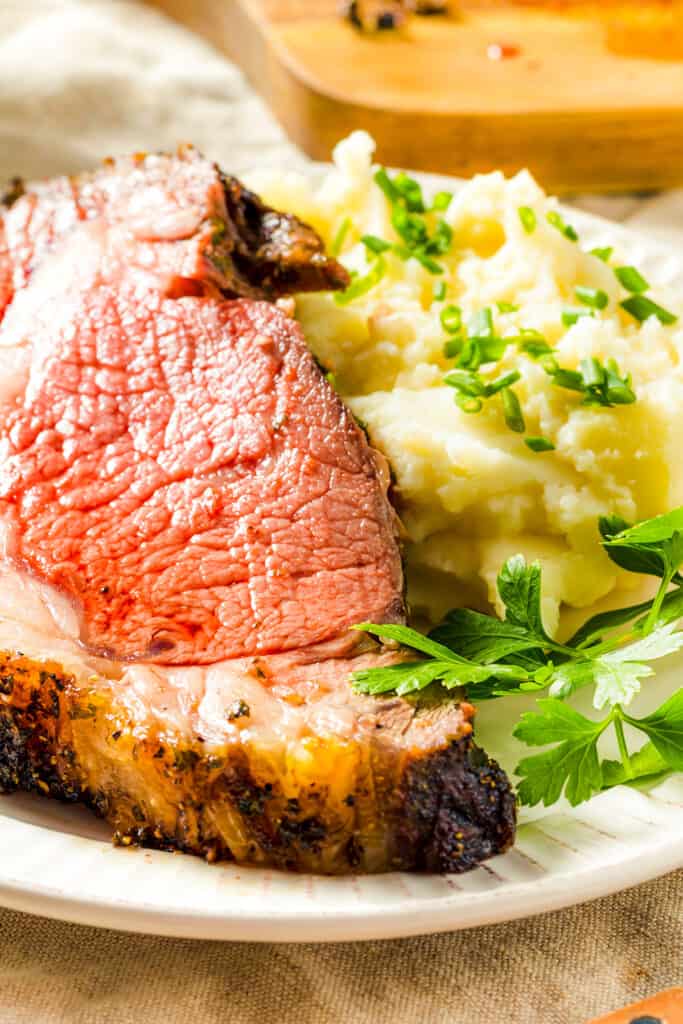
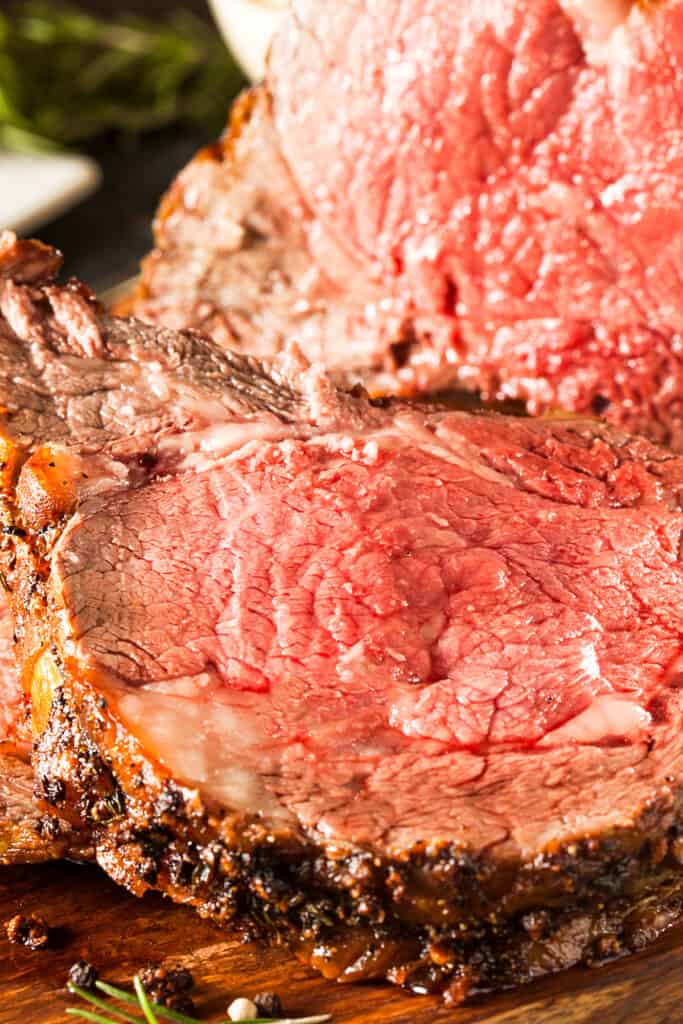

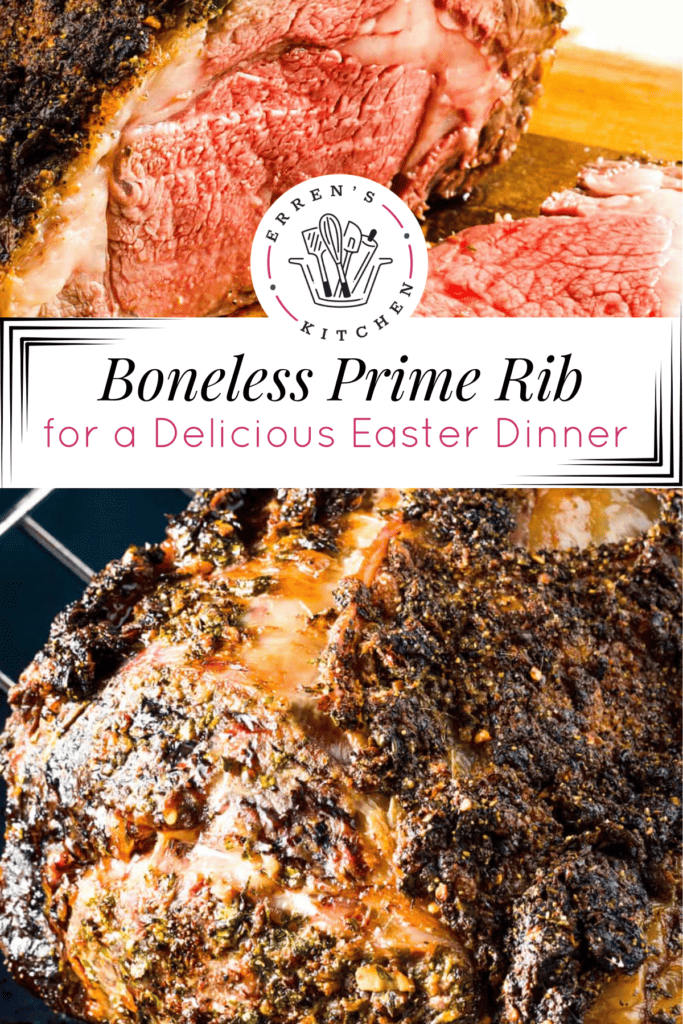
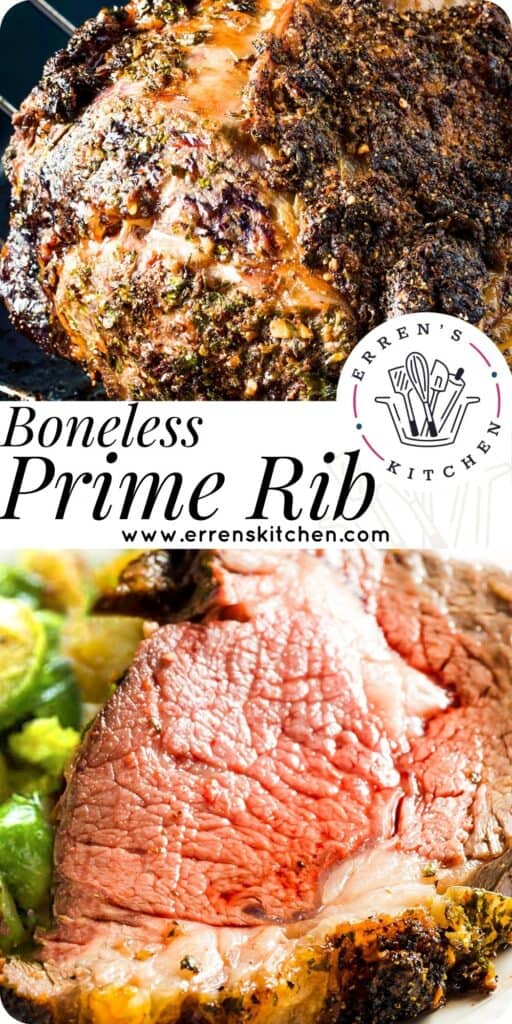

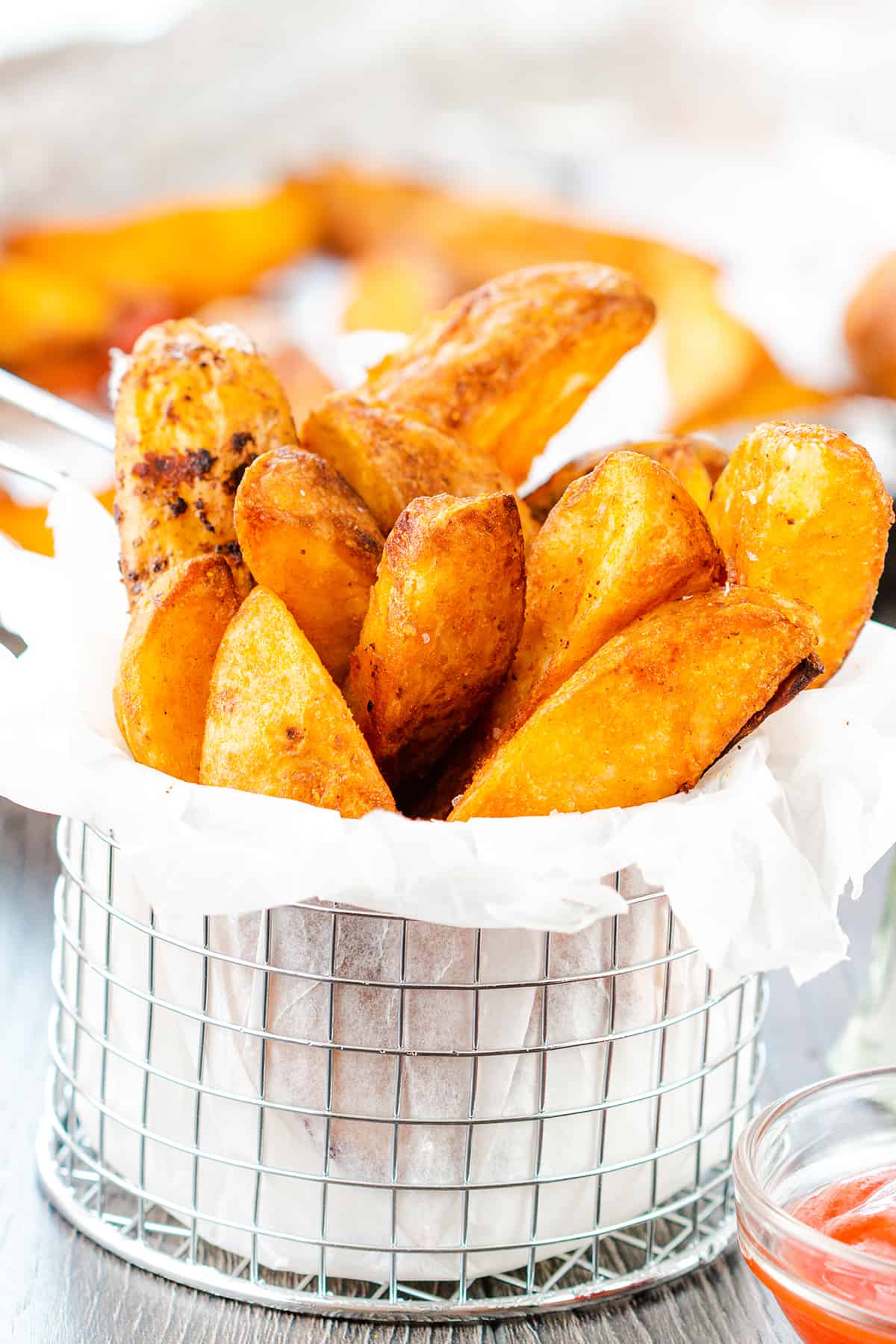
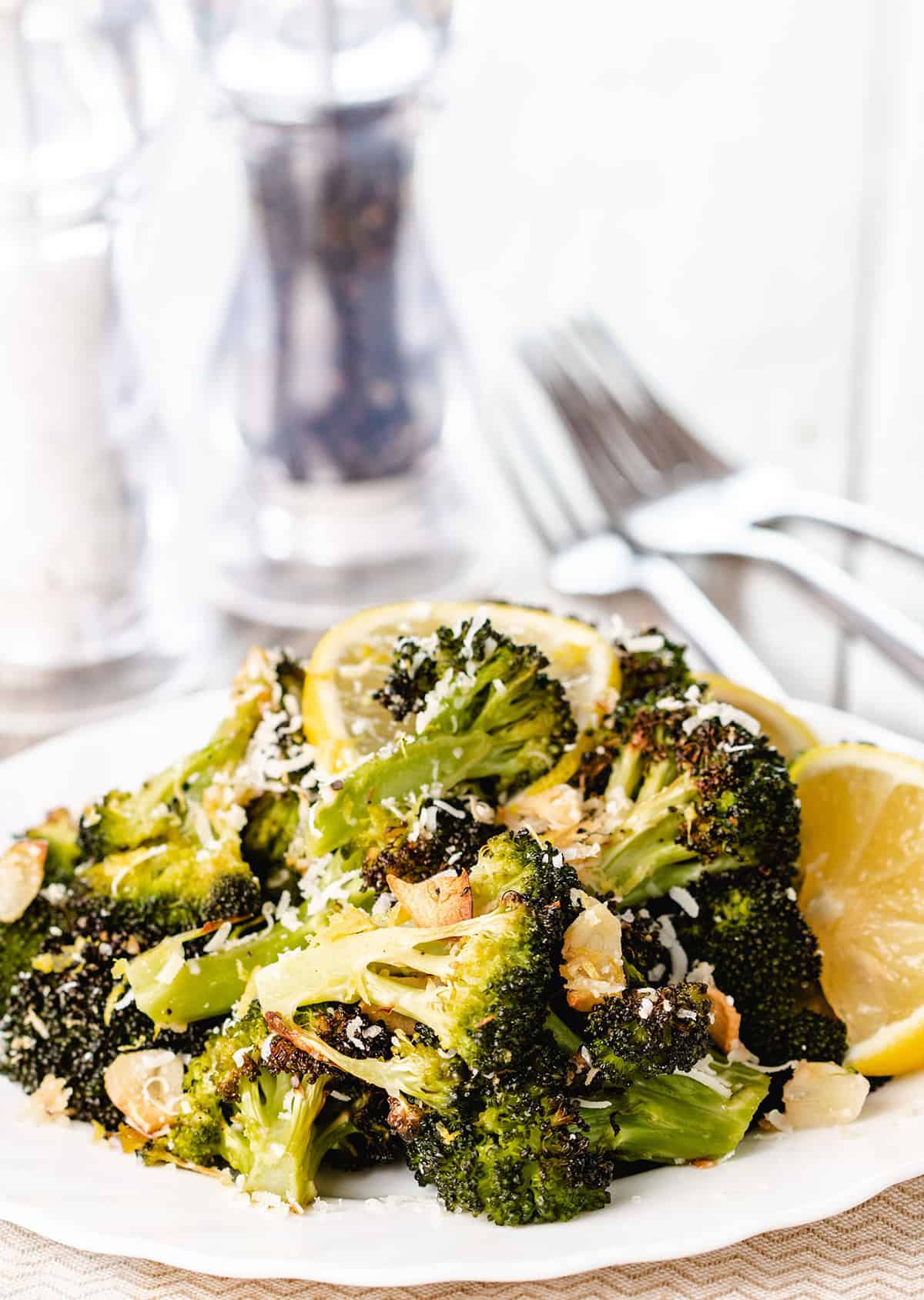
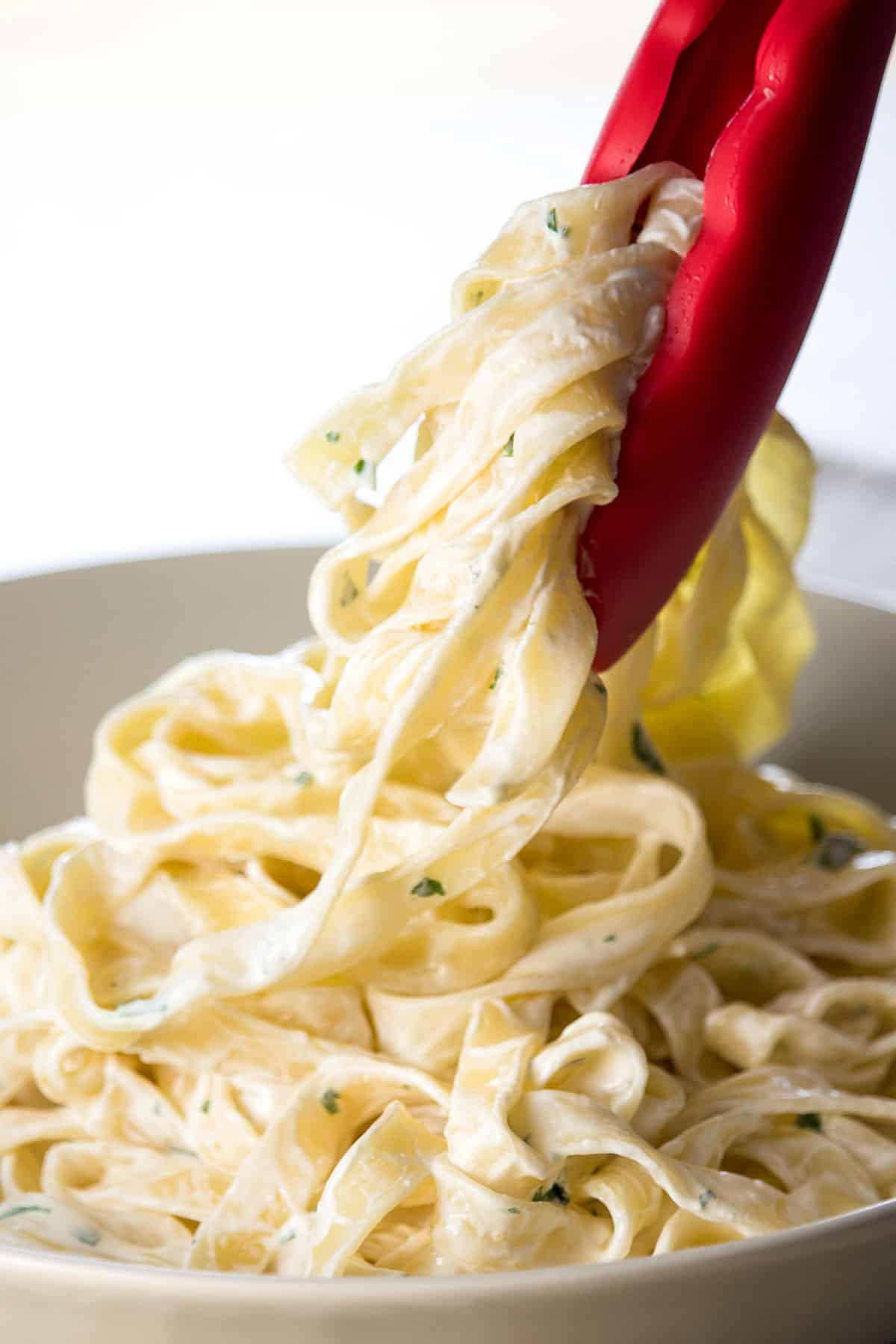
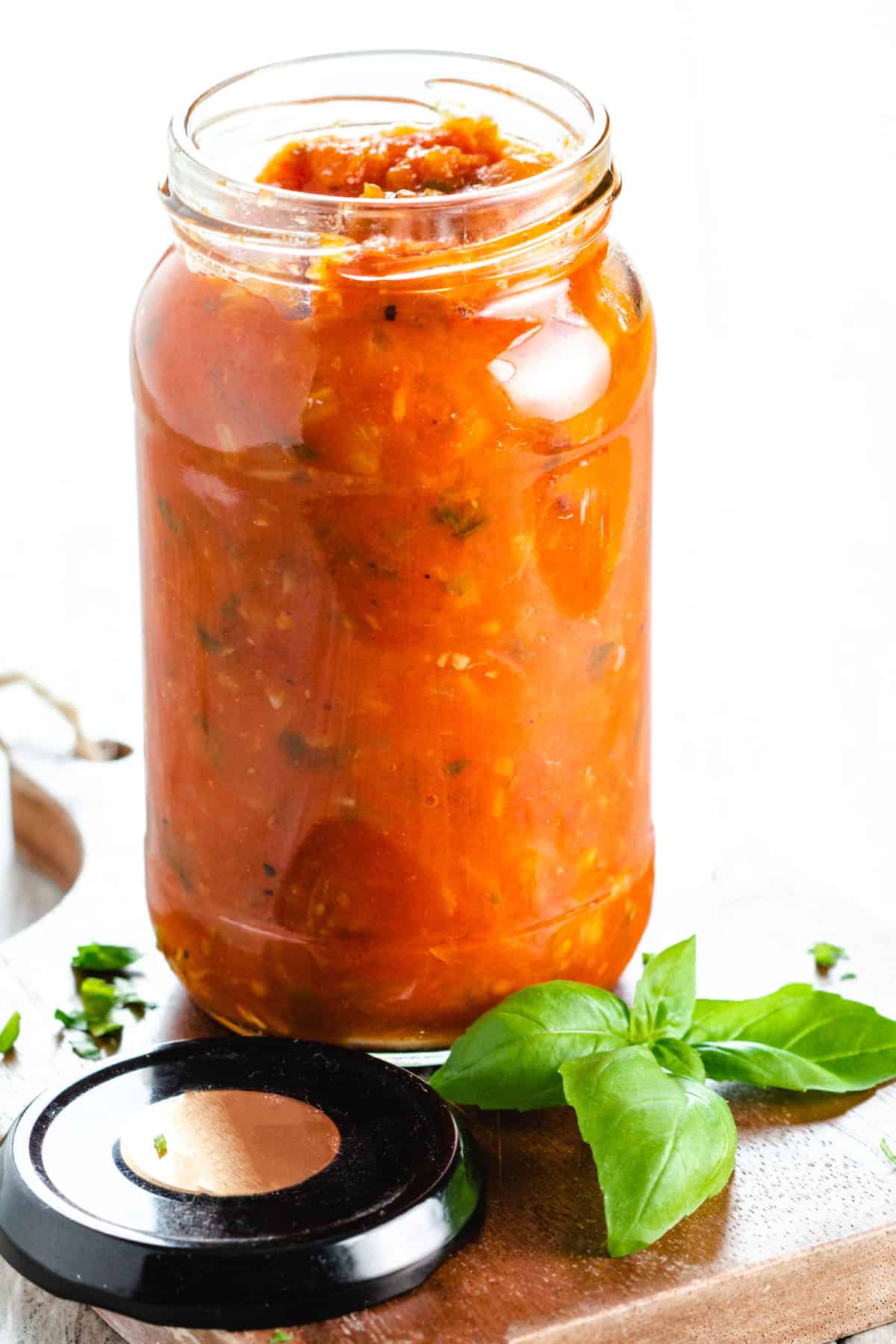
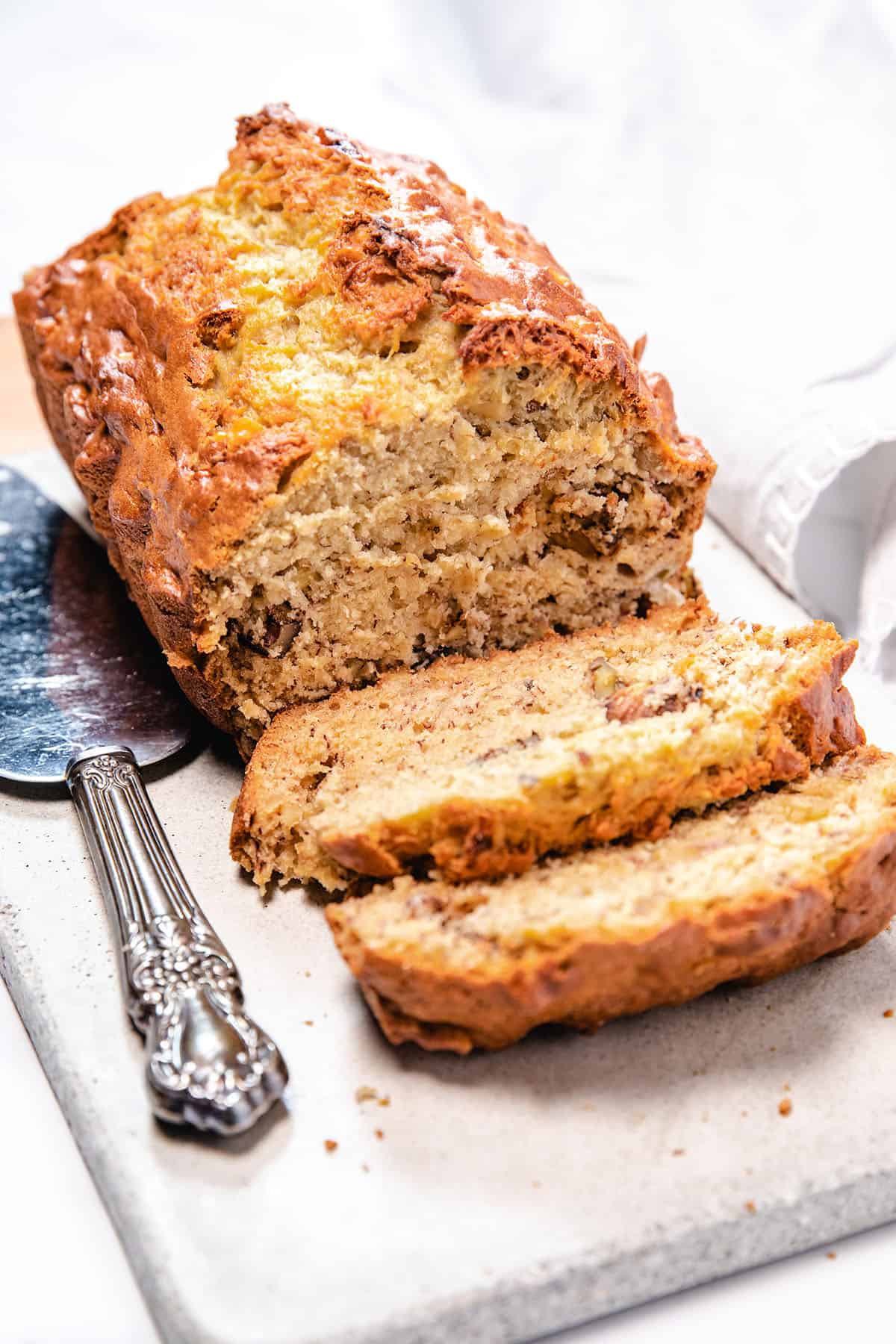
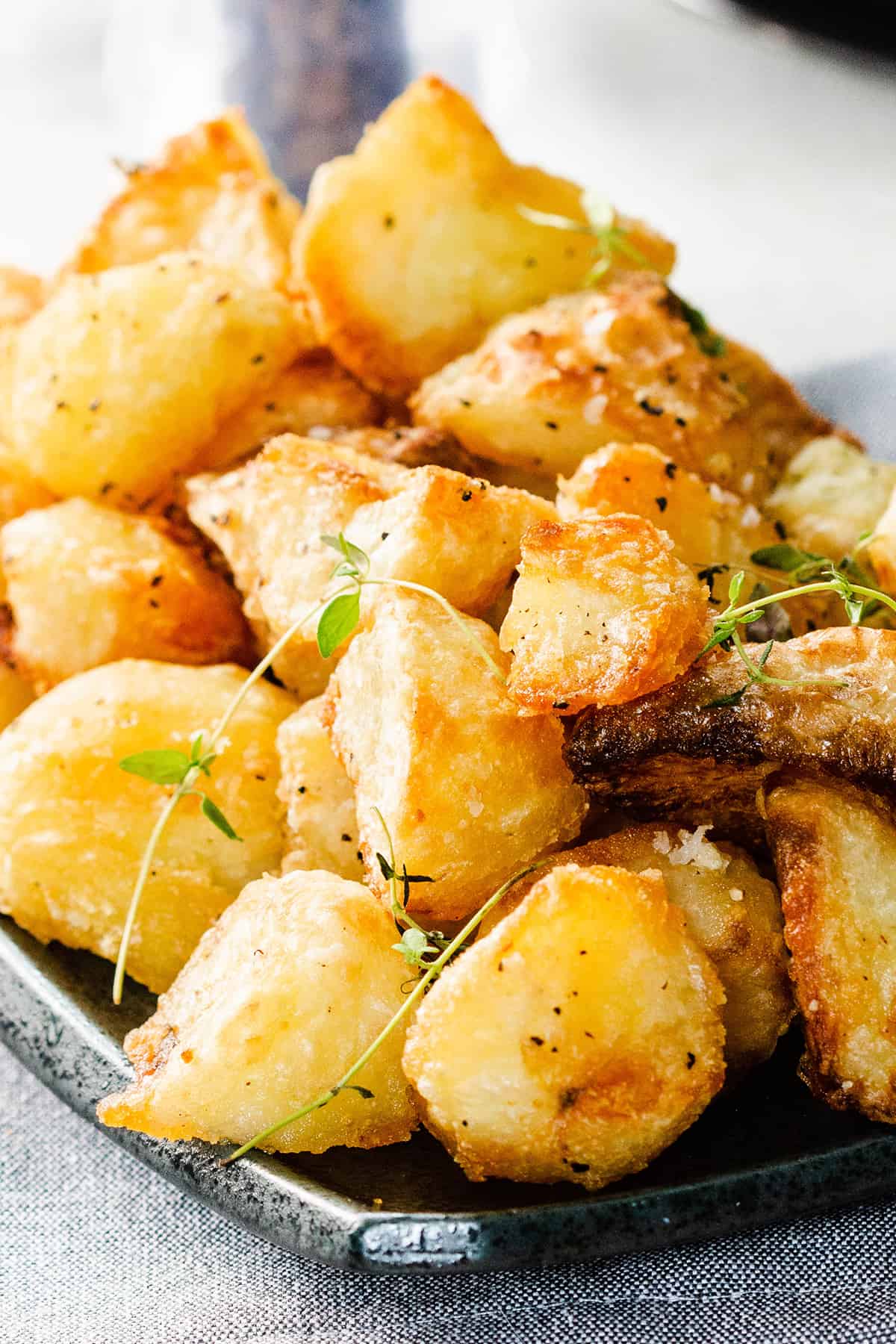
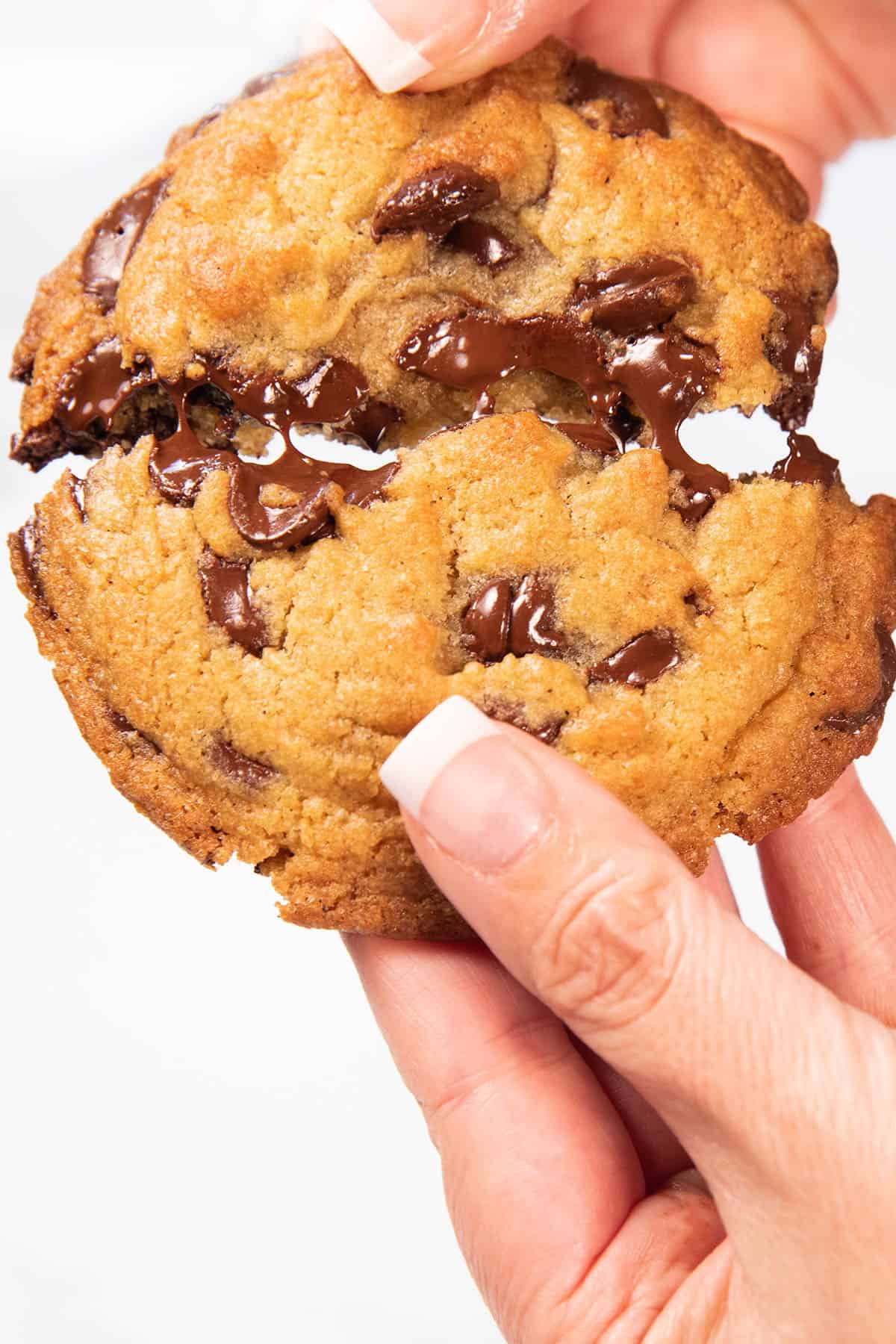
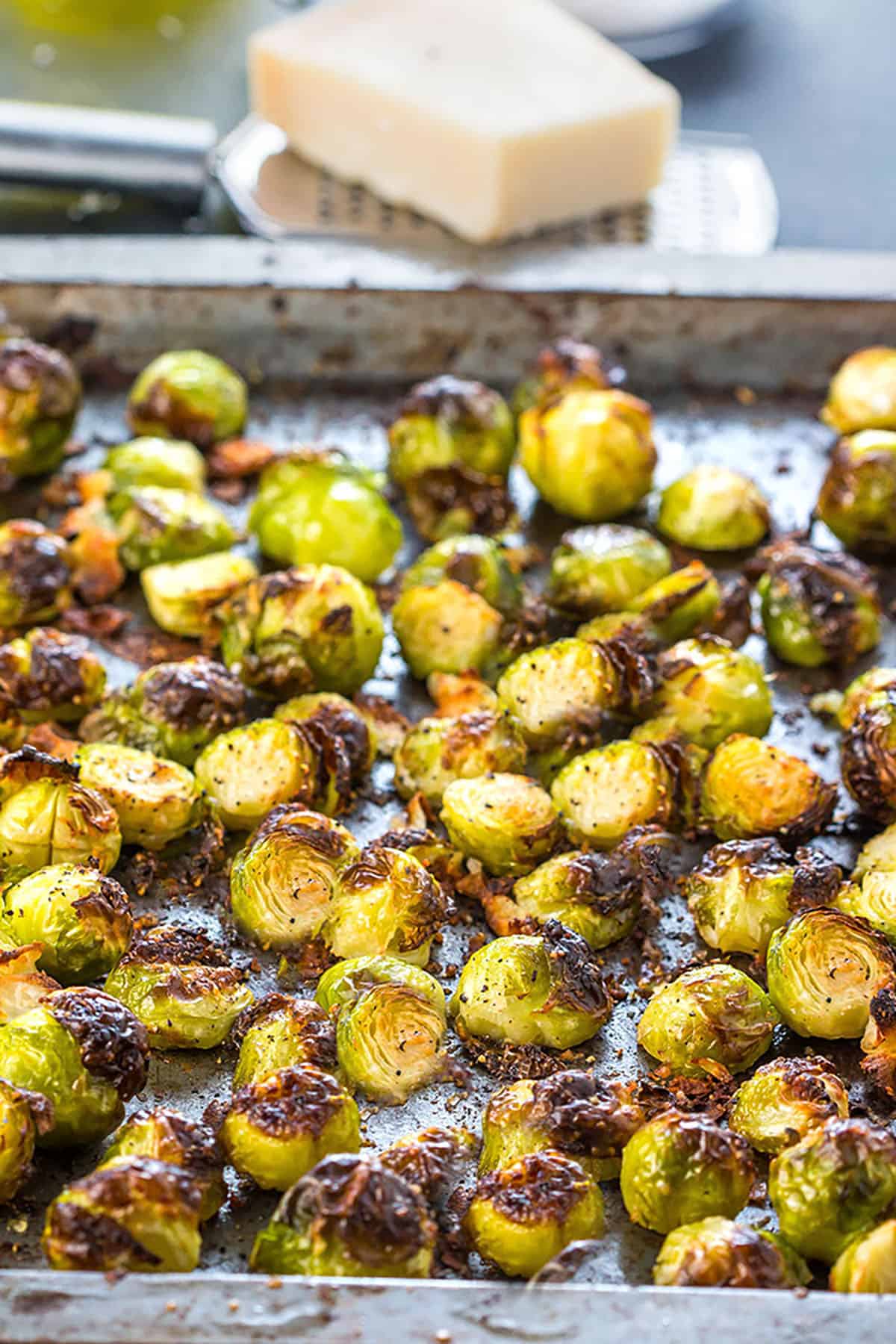
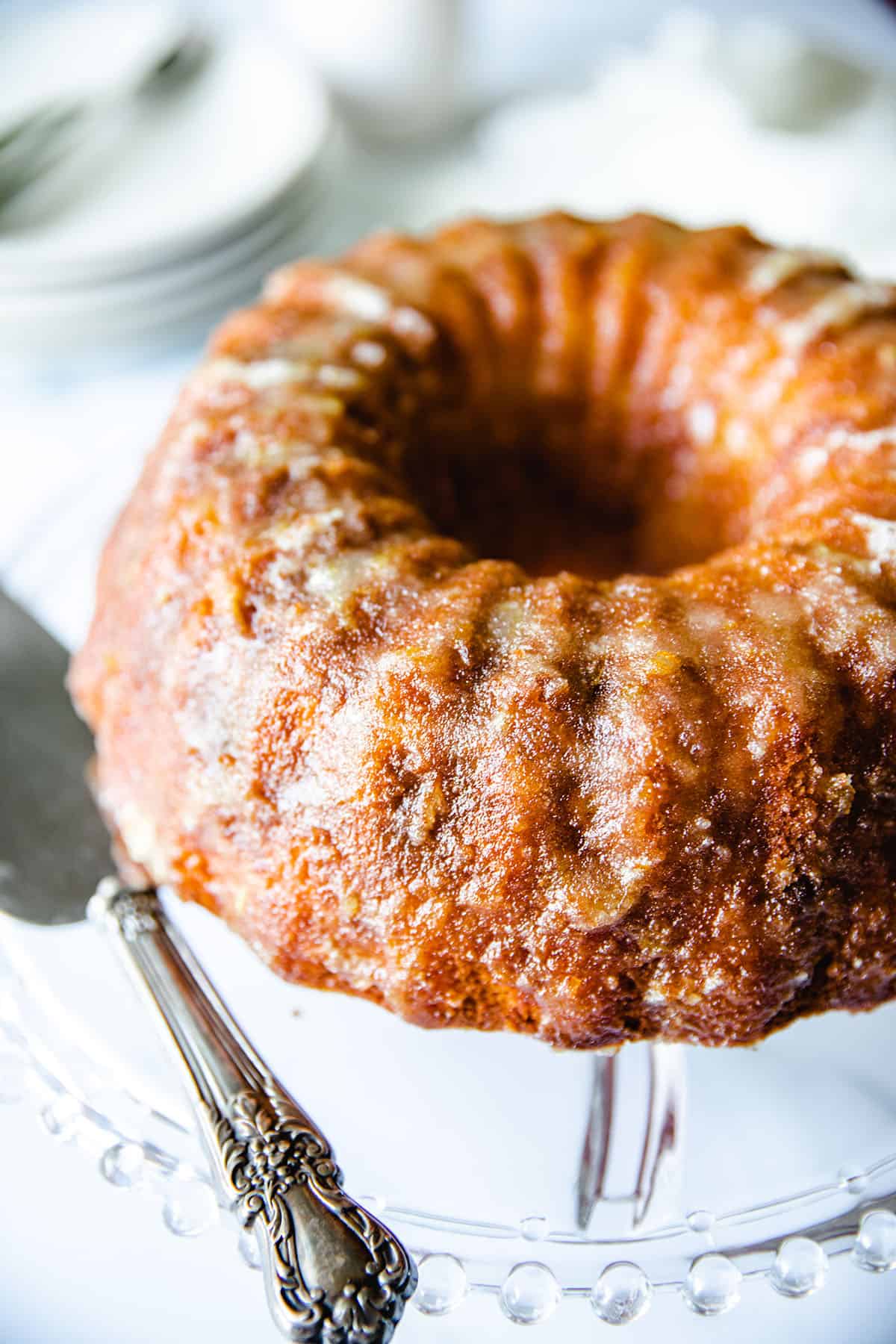
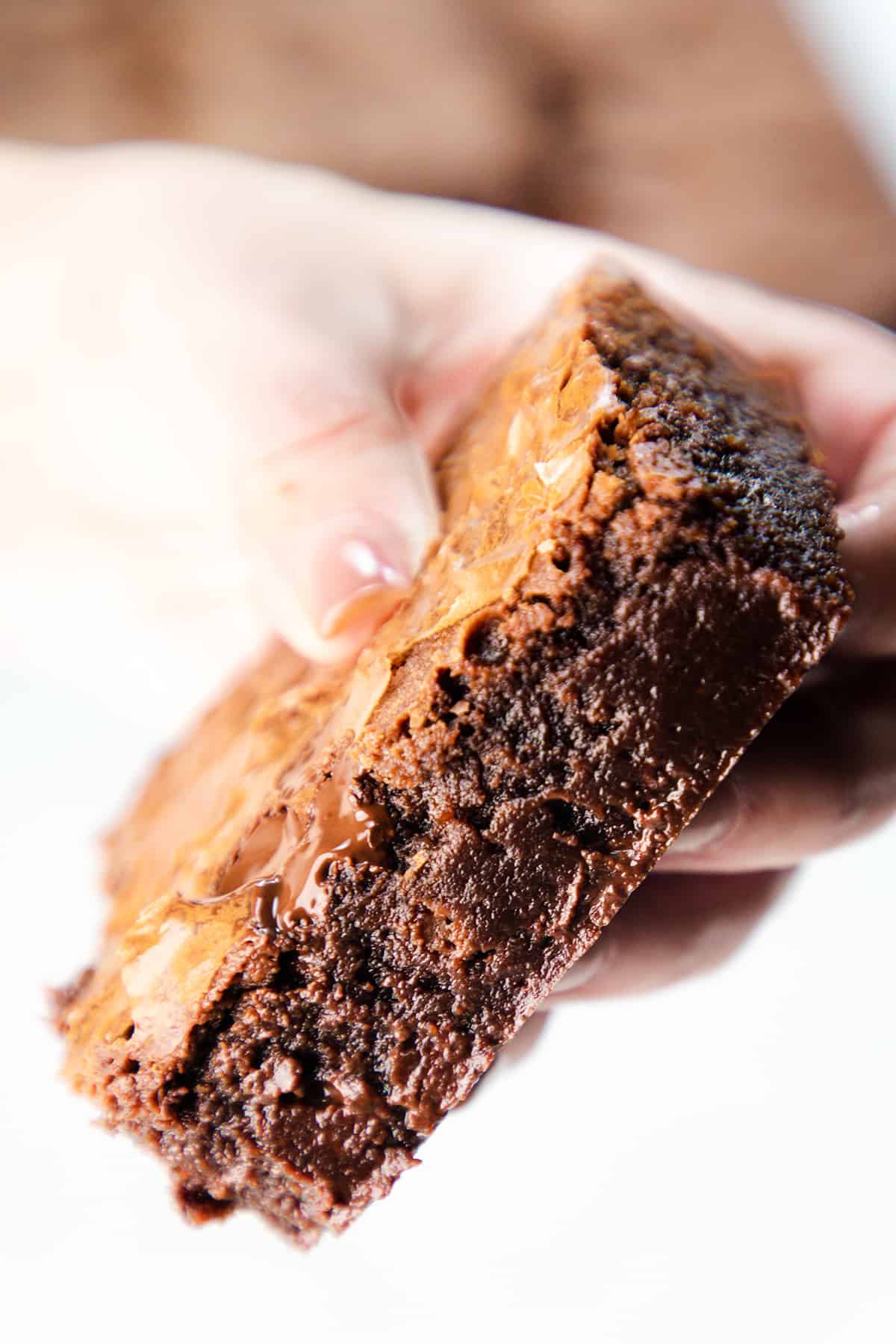
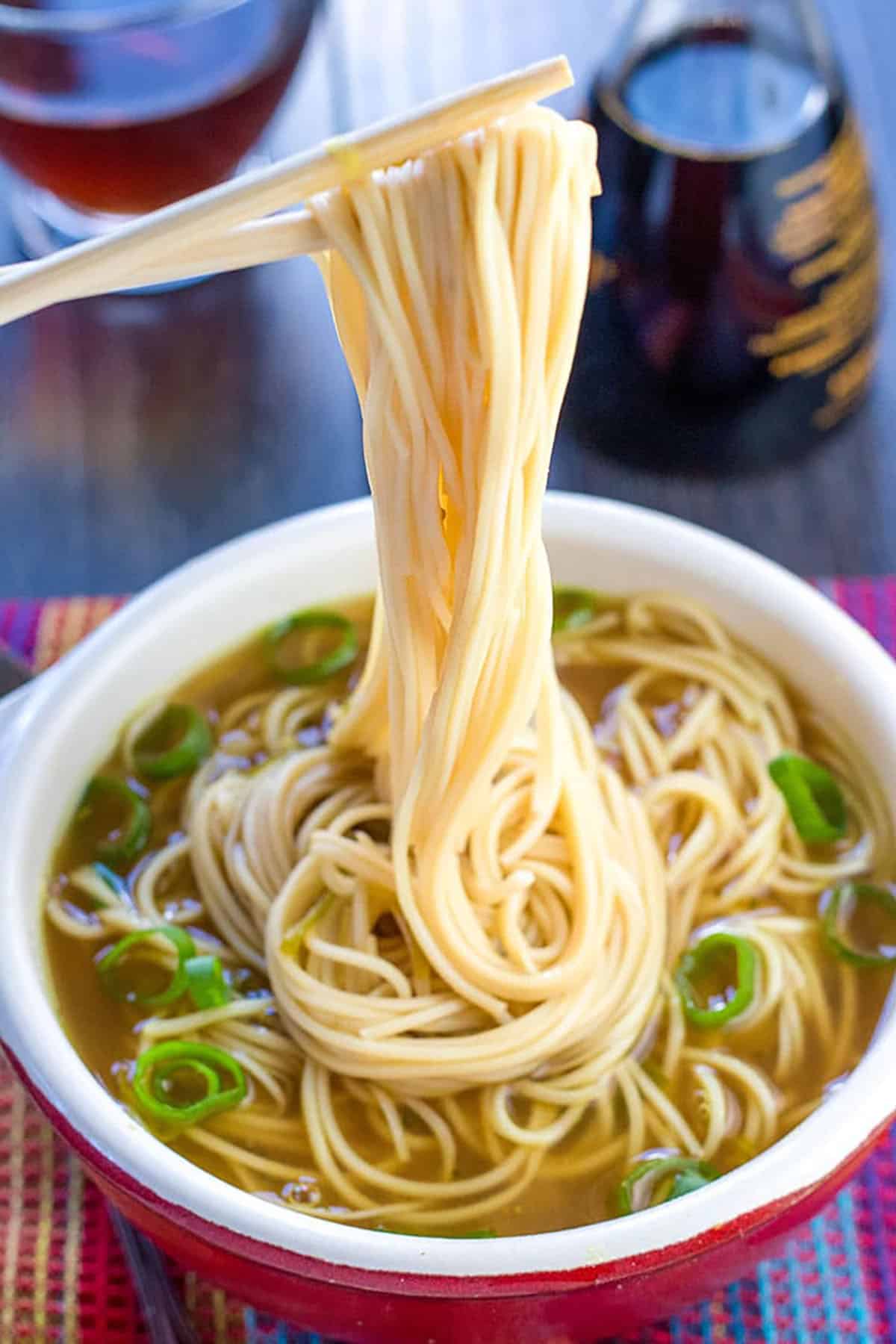
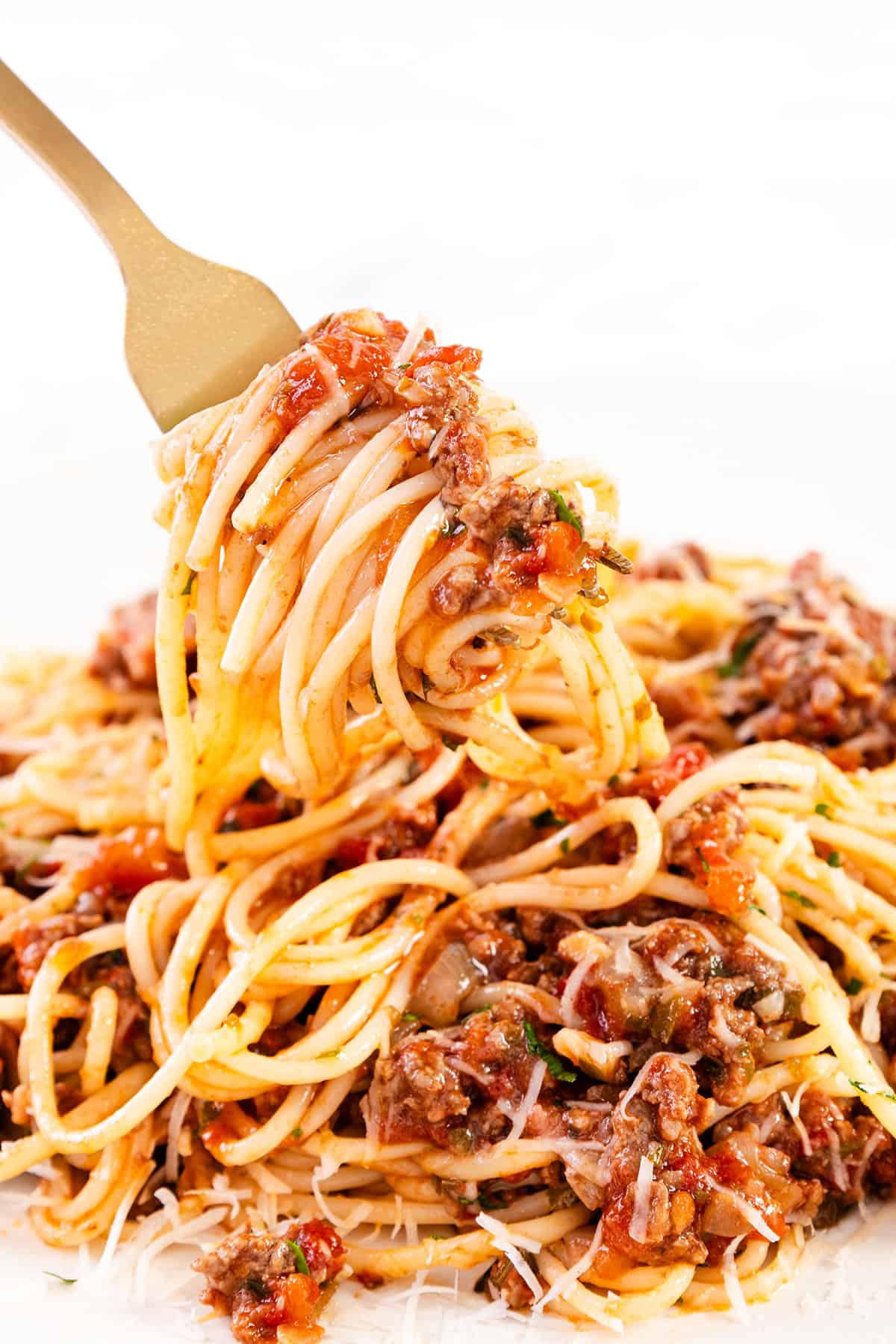
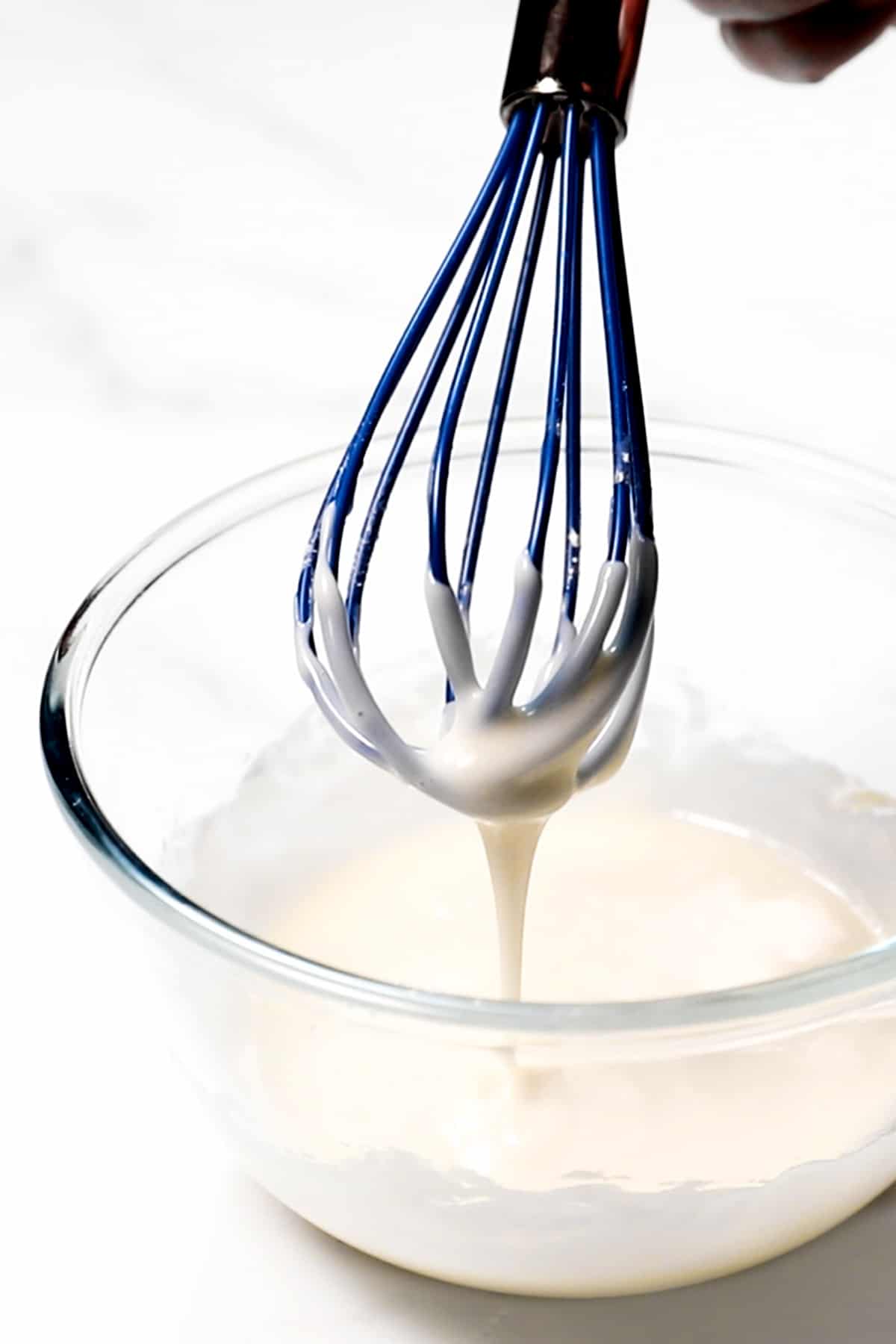

Leave a Reply